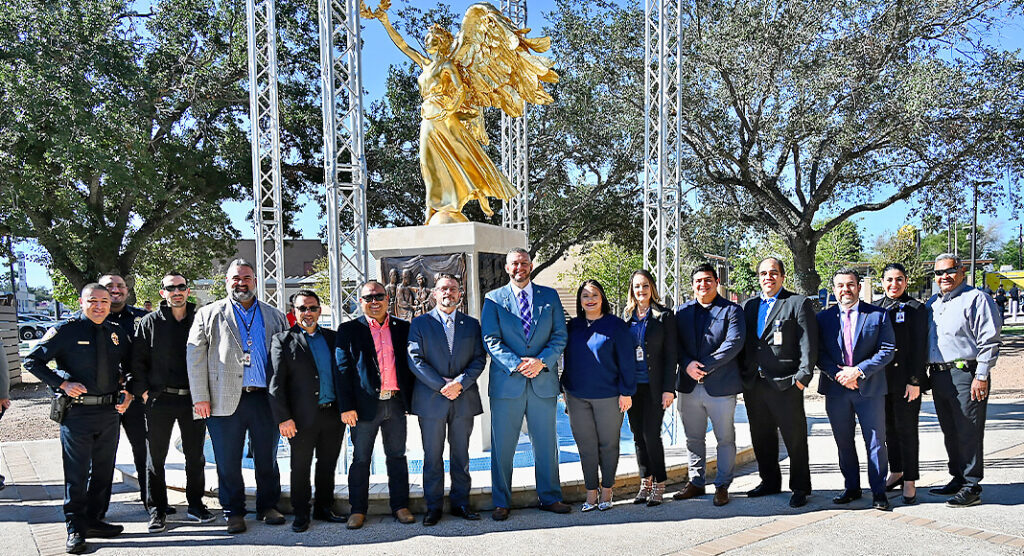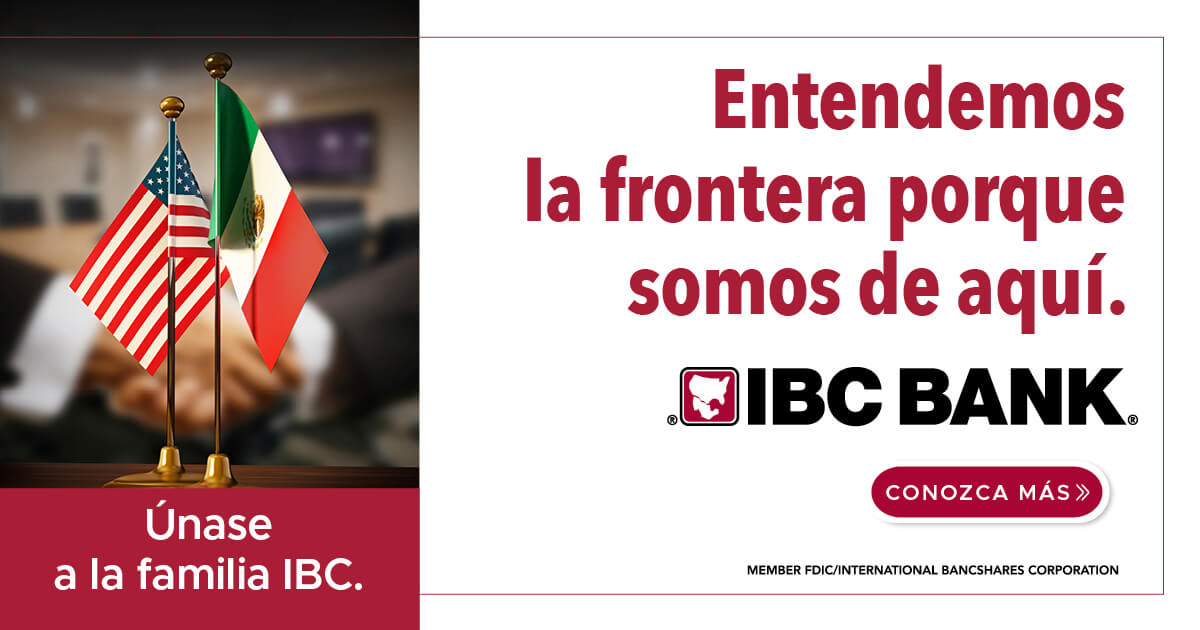
Texas Border Business
By Roberto Hugo González
Not even the nomadic Coahuiltecans that lived here in Pharr, before it was Pharr in the 1500s, nor John C. Kelly, Henry N. Pharr, W.E. Cage, and R.C. Briggs who formed the Pharr Townsite Company in 1909, had envisioned the transformation of the City of Pharr, much less to enjoy a beautiful Greek statue next to a beautiful multilevel City Hall.
Attendees to the Monumental unveiling ceremony enjoyed perfect weather for the celebration. Interim Pharr City manager, Dr. Jonathan Flores, came to the podium and said, “Good morning, everybody, and welcome on behalf of Mayor Dr. Ambrosio Hernandez and the Pharr City Commission. Welcome to our great city of Pharr. We are gathered here today for a very special unveiling and dedication of a symbol that is very meaningful to us here in Pharr.”

The statue that they were about to unveil depicted Nike, the Greek Goddess of Victory. This goddess of Nike is one of the impressive sculptures in the world, capturing the essence of aesthetic beauty, outstanding craftsmanship, and deep symbolism. In Mexico City, a similar statue towers 148 feet into the sky on Avenida Paseo de la Reforma.
This golden statue shimmers in the Mexican sunlight, holding aloft a laurel of victory and broken chains to symbolize freedom.
The statue is a beautiful monument of historic art and remains a powerful symbol that speaks to the fundamental values of family, trade, public safety, and education, all of which are so important to the City of Pharr.
Dr. Flores highlighted that the downtown park has been revitalized and continues to be revitalized, a place where the community gathers in unity.
He also pointed out that Pharr’s elected officials are dedicated to the city’s families. They have worked hard to enhance the quality of life through new parks, city festivals, and various community events. “They have also spearheaded several major projects that have had a significant impact on the community, such as their broadband internet project, which closes the digital divide, and investments in international trade, economic development, and growth.”
He also mentioned that Public Safety and education are of utmost importance to Pharr’s city leadership. Under their leadership, Pharr was the first city to launch a mental health unit in the Rio Grande Valley and have continued to educate Pharr families on safety issues through their police and fire department outreach efforts.
Dr. Flores also said, that in the education arena, Pharr has expanded collaborations, resulting in attracting many new educational opportunities for its families. Partnerships with Pharr, San Juan, Alamo, (PSJA ISD) and Region One have led to programs like internships that provide students with real-world training and business knowledge.
He noted that Pharr’s organizational values and guiding principles are in line with the symbolism of Nike, the Goddess of Victory, representing qualities such as strength, swiftness, agility, and the aspiration for knowledge and progress. The unveiling of the statue was a testament to the city’s commitment to these values.
Right after Dr. Flores’ speech, there was a ten-second countdown, and as the crowd chanted down from 10 to 1, the monumental historic symbol of victory was unveiled, signifying Pharr’s success and progress.
Brief History of the City of Pharr:
For many centuries, nomadic Coahuiltecans lived in the Lower Rio Grande area. In the 1500s, Spanish explorers came through the region, and the Spanish government began to colonize both sides of the river by the late 1700s. At the close of the U.S.-Mexico war in 1846, the Rio Grande was established as the official boundary.
In 1909, John C. Kelly, Henry N. Pharr, W.E. Cage, and R.C. Briggs formed the Pharr Townsite Company, laying the foundation for the city. Pharr schools began in 1911, and the community later joined with San Juan and Alamo to create the Pharr-San Juan-Alamo School District.
The city founders were also involved with the Louisiana-Rio Grande Canal Co., organized in 1910 to furnish irrigation and domestic water to 40,000 acres in the Pharr area. This shift from ranching to crop production, along with the arrival of the railroad in 1905, led to the city’s economic growth.
Pharr was incorporated in 1916 and earned the nickname “Hub City of the Valley” due to its strategic location at the intersection of two major highways. Today, Pharr remains a vital business center, with an international bridge providing an essential commercial link to Mexico.
Pharr’s history is an example of transformation from a humble beginning to a thriving city that values its heritage while continuously striving for progress and victory in all aspects of life.












